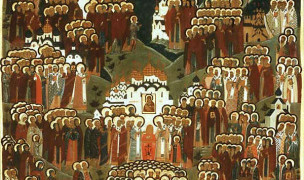 1 Terms
1 TermsHome > Terms > English (EN) > inner city
inner city
Under various designations, American urban cores long have been centers of interaction, consumption and power. Since the 1960s, the positive “down-town” has overlapped with the problematic inner city divorced from affluent outward expansion. Other related terms (Central Business District, or specific usages like the Loop, Center City Midtown, etc.) have taken on varied political and social meanings.
Since colonial times, the city has been a place where people of diverse social and cultural backgrounds have come together. Despite differences in status and wealth, neat separations often proved impossible until innovations in transportation allowed cities to expand in the nineteenth century re-mapping wealth, culture and race. By the 1920s, social scientists of the Chicago School recognized different urban functional zones. Park and Burgess’ studies, for example, identified a central business district containing political, economic and cultural services for the city (although limited residence). Around this stood factories and working-class immigrant homes in a transitional zone of abandoned wealthy residences. This model suggested that the inner city was constantly renewed by new immigrants, while those who assimilated moved outward.
Relations between groups living and working at the urban core were not always friendly As groups moved out, tensions could erupt between those who shared neither heritage, language, nor skin color. In other cases, the mingling at the urban center alarmed those who governed the city. Hence Los Angeles’ downtown, where Asian Americans, African Americans and Latino/as met, was dismantled over time, separating ethnic enclaves and precluding joint political action.
Many aspects of the “inner city” as a problem were exacerbated by urban renewal and upheavals of social movements of the 1960s. Here, government and private interventions often worked at cross-purposes. Highways as routes to communicate between central areas and suburbs, for example, often dissected vibrant areas around the business district.
Destruction of decaying houses and factories in the core also created open scars in the tightly knit fabric of the city In this chaos, riots broke out from Los Angeles to Washington, DC, often laying waste to whole sections and driving out businesses, employers and residents.
In the 1970s and 1980s, gentrification brought predominantly white suburbanites in to restore the older homes at the center which previous generations had abandoned.
Unfortunately this often forced the eviction of other ethnic populations who found no housing near the center nor opportunities to move further out. Still, “success stories” like Philadelphia, PA’s Society Hill or Savannah, GA’s Historic District enriched the “inner city” alongside corporate towers and public buildings.
Modern theorists increasingly argue that post-industrial cities, defined by services and information rather than heavy production, no longer require the same spatial concentrations of the past. Government offices, corporate headquarters and even sports teams have left behind aging infrastructures in order to be closer to a larger group of suburban consumers in suburbs and edge cities. Downtowns may be defined in terms of “special” places like museums, cinemas, restaurants and markets. Yet the inner city has become associated with danger, poverty and homelessness for those who avoid it, and with waste and with rage for those who inhabit it.
As a human center where diverse Americans have met and established their claims, the inner city has been the cradle of a multicultural experience. Yet, as television and cinematic representations from the Detroit, MI of Robocop (1987) and the Los Angeles of Blade Runner (1982) suggest, these areas can also be identified with the ex-urbanites’ worst nightmares.
- Part of Speech: noun
- Synonym(s):
- Blossary:
- Industry/Domain: Culture
- Category: American culture
- Company: Routledge
- Product:
- Acronym-Abbreviation:
Other Languages:
Member comments
Terms in the News
Billy Morgan
Sports; Snowboarding
The British snowboarder Billy Morgan has landed the sport’s first ever 1800 quadruple cork. The rider, who represented Great Britain in the 2014 Winter Olympics in Sochi, was in Livigno, Italy, when he achieved the man-oeuvre. It involves flipping four times, while body also spins with five complete rotations on a sideways or downward-facing axis. The trick ...
Marzieh Afkham
Broadcasting & receiving; News
Marzieh Afkham, who is the country’s first foreign ministry spokeswoman, will head a mission in east Asia, the state news agency reported. It is not clear to which country she will be posted as her appointment has yet to be announced officially. Afkham will only be the second female ambassador Iran has had. Under the last shah’s rule, Mehrangiz Dolatshahi, a ...
Weekly Packet
Language; Online services; Slang; Internet
Weekly Packet or "Paquete Semanal" as it is known in Cuba is a term used by Cubans to describe the information that is gathered from the internet outside of Cuba and saved onto hard drives to be transported into Cuba itself. Weekly Packets are then sold to Cuban's without internet access, allowing them to obtain information just days - and sometimes hours - after it ...
Asian Infrastructure Investment Bank (AIIB)
Banking; Investment banking
The Asian Infrastructure Investment Bank (AIIB) is an international financial institution established to address the need in Asia for infrastructure development. According to the Asian Development Bank, Asia needs $800 billion each year for roads, ports, power plants or other infrastructure projects before 2020. Originally proposed by China in 2013, a signing ...
Spartan
Online services; Internet
Spartan is the codename given to the new Microsoft Windows 10 browser that will replace Microsoft Windows Internet Explorer. The new browser will be built from the ground up and disregard any code from the IE platform. It has a new rendering engine that is built to be compatible with how the web is written today. The name Spartan is named after the ...
Featured Terms
Shakyamuni Buddha
The historical Buddha, who lived in the 6th Century BC and was the origin of Buddhism and Buddhist thought.
Contributor
Featured blossaries
bcpallister
0
Terms
1
Blossaries
0
Followers
Joiner Hardware in Relation to Timber Doors and Windows
 1 Terms
1 Terms
Browers Terms By Category
- Lingerie(48)
- Underwear(32)
- Skirts & dresses(30)
- Coats & jackets(25)
- Trousers & shorts(22)
- Shirts(17)
Apparel(222) Terms
- Alcohol & Hydroxybenzene & Ether(29)
- Pigments(13)
- Organic acids(4)
- Intermediates(1)
Organic chemicals(47) Terms
- Characters(952)
- Fighting games(83)
- Shmups(77)
- General gaming(72)
- MMO(70)
- Rhythm games(62)
Video games(1405) Terms
- Software engineering(1411)
- Productivity software(925)
- Unicode standard(481)
- Workstations(445)
- Computer hardware(191)
- Desktop PC(183)
Computer(4168) Terms
- Medicine(68317)
- Cancer treatment(5553)
- Diseases(4078)
- Genetic disorders(1982)
- Managed care(1521)
- Optometry(1202)





